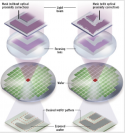The official website of the PyTorch Foundation announced today that Huawei has joined the PyTorch Foundation, becoming China's first and the world's tenth PyTorch highest-level Premier member. The official blog stated that Huawei has long been a supporter and contributor to the PyTorch ecosystem. By promoting diverse computing power support and improvements, it has helped more backend manufacturers access the PyTorch ecosystem more easily, and is actively committed to PyTorch optimization. , thereby fully releasing Shengteng’s computing power.
The latest version 2.1 released by the PyTorch community has simultaneously supported Ascend NPU, and with the promotion of Huawei, a more complete third-party device access mechanism has been updated. Based on this feature, third-party AI computing devices can connect to the PyTorch framework without modifying the original framework code. Ascend also provides an officially certified reference implementation of Torch NPU, which can guide third-party devices to easily connect. Based on the new version, users can directly enjoy the native PyTorch development experience on Ascend NPU, and obtain models and applications that run efficiently on Ascend computing devices.
The latest version 2.1 released by the PyTorch community has simultaneously supported Ascend NPU, and with the promotion of Huawei, a more complete third-party device access mechanism has been updated. Based on this feature, third-party AI computing devices can connect to the PyTorch framework without modifying the original framework code. Ascend also provides an officially certified reference implementation of Torch NPU, which can guide third-party devices to easily connect. Based on the new version, users can directly enjoy the native PyTorch development experience on Ascend NPU, and obtain models and applications that run efficiently on Ascend computing devices.


